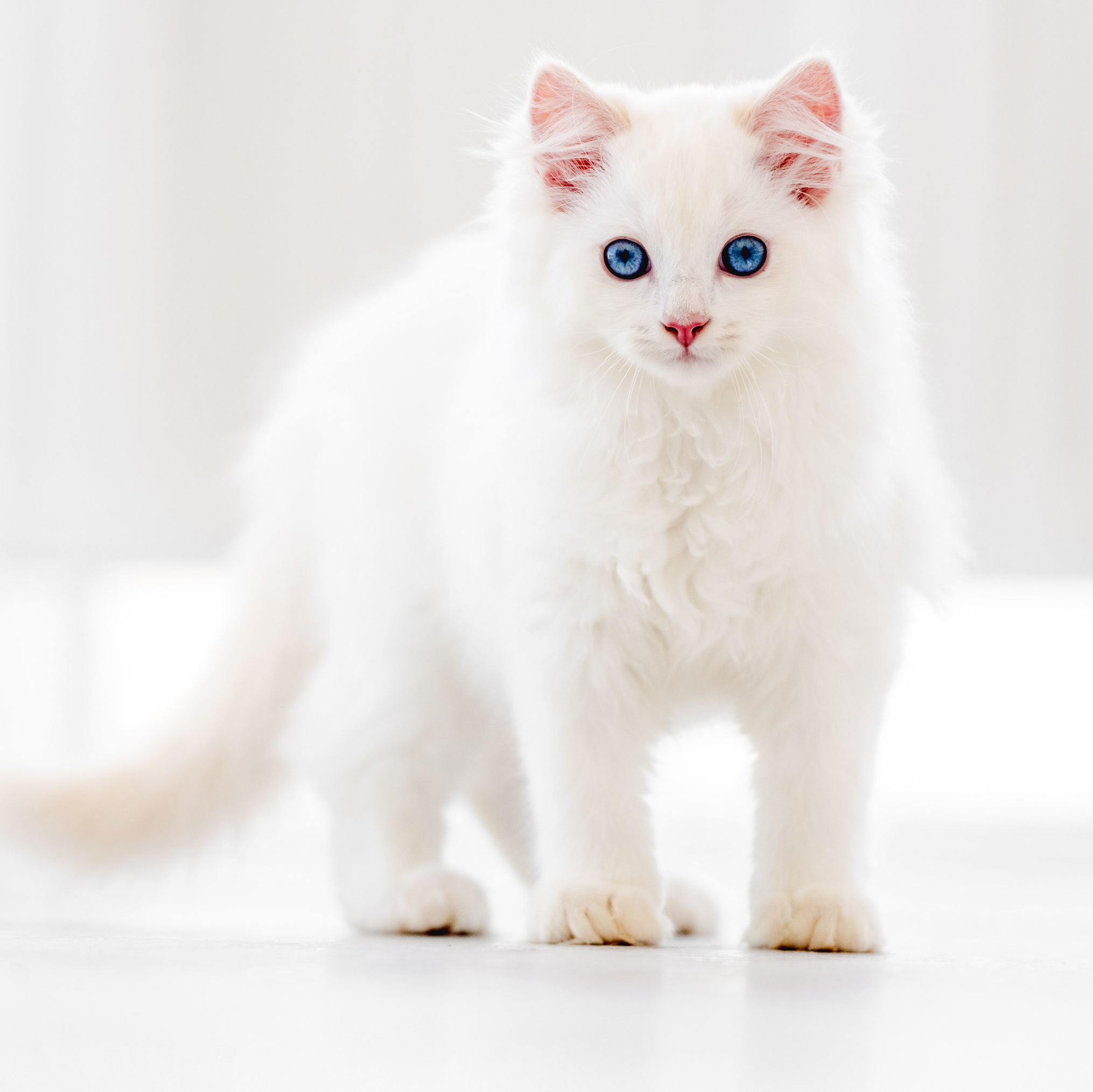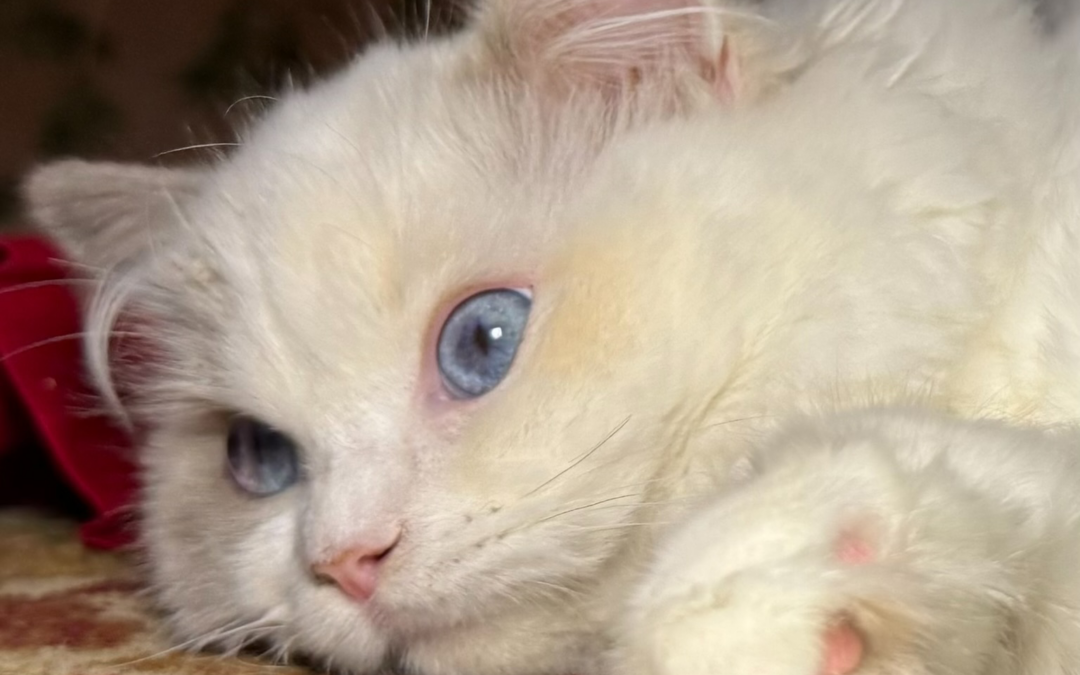Bunnie, our blue bicolor tortie
The Sex-Linked O Gene
How the O Gene on the X Locus Determines a Kitten to be Red/Cream or Tortie
RED COLOR
The red (0 gene) is only carried on the X chromosome.
During development the O or o allele is applied to each X chromosome to determine whether or not the cat will or will not be red.
Females have two X chromosomes so each will inherit either red or non-red, producing either red, non-red or tortie colored.
If the female inherits:
- O = red (males)
- OO = red (females)
- Oo = tortie
- oo = not red

Cream ragdoll kitten – As you can see, the cream color takes longer to come in than other colors. If you look at the tail and feet, you’ll see the cream starting to come in there and will fill in throughout the other points and eventually the rest the secondary areas.
Since males only have one X chromosome, they only inherit one red sex-linked gene.
If a male inherits:
- O = red
- o = not red
This is why only females can be tortie (though there are rare exceptions when something goes wrong and the male inherits XXY genes (Klinefelter syndrome). In this case, they are usually sterile
Also, more often than females, males are red. This is because in order for a male and female cat to produce a red female kitten, they both must be red. So it is rather rare to see a female red kitten, as they are almost always tortie.
RED DILUTED TO CREAM “The O gene”
Cream Ragdolls are the result of a cat, inheriting the O, or Oo in females, along with dilute.
So males inherit:
ODD = Red
Odd = Cream
And females inherit:
OOdd = Cream
OoDD = Tortie Undiluted (Seal Red Tortie)
Oodd = Tortie Diluted (Blue Cream tortie)
For example, a black (seal) tortie’s alleles will be O0BBDD or OoBbDD and a blue tortie’s will be Oobbdd. There are Chocolate and Cinnamon torties as well, which I believe would be something like OobbDD or Oobbdd for Chocolate ragdolls and Oob¹b¹DD for Cinnamon or Oob¹b¹dd for fawn.

